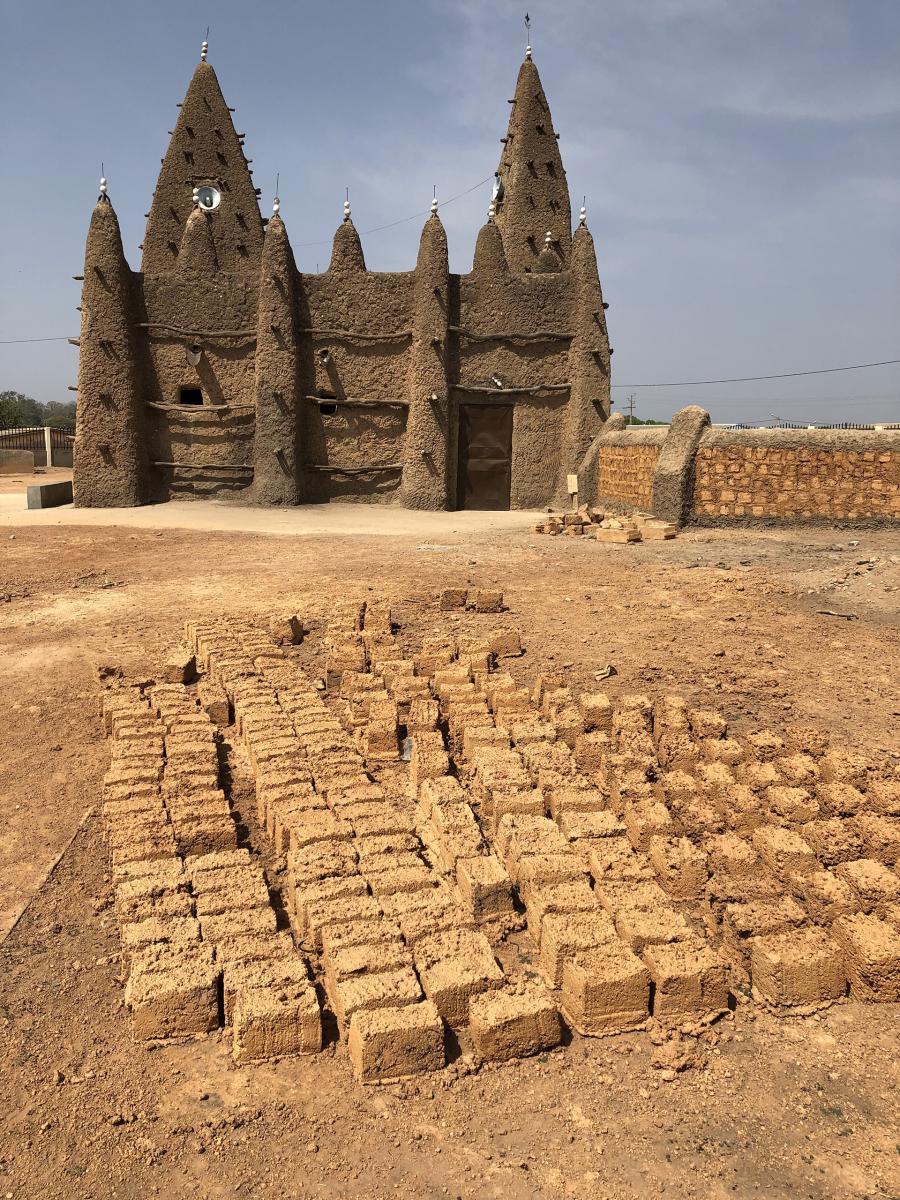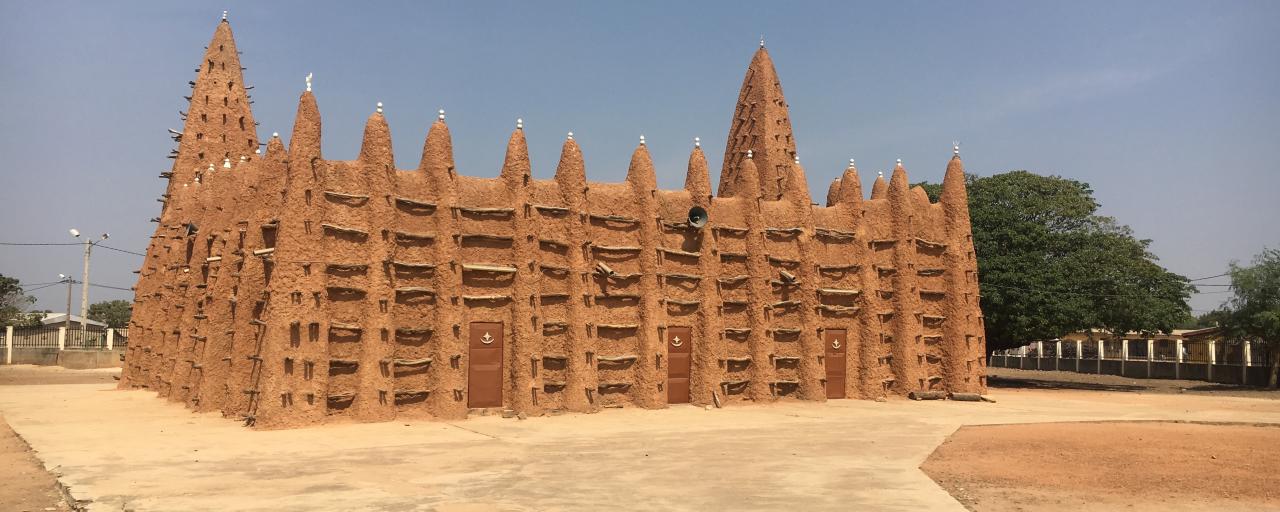Submitted by SafariADV on Tue, 2019-02-19
We are in Kong, in the Ivory Coast; this small town has an important past, in fact, it was on the trade route that, from the Atlantic coast, headed towards the Sahara Desert, to then reach the Mediterranean, and vice versa.
One of the unmistakable traces of its glorious past, and of the passage of Arab merchants, is the presence of two Sudanese-style mosques that, despite the invasions and the passing of the centuries, have managed to reach the present day.
They are the only example of Sudanese architecture in the Ivory Coast and we have arrived here to see these masterpieces.
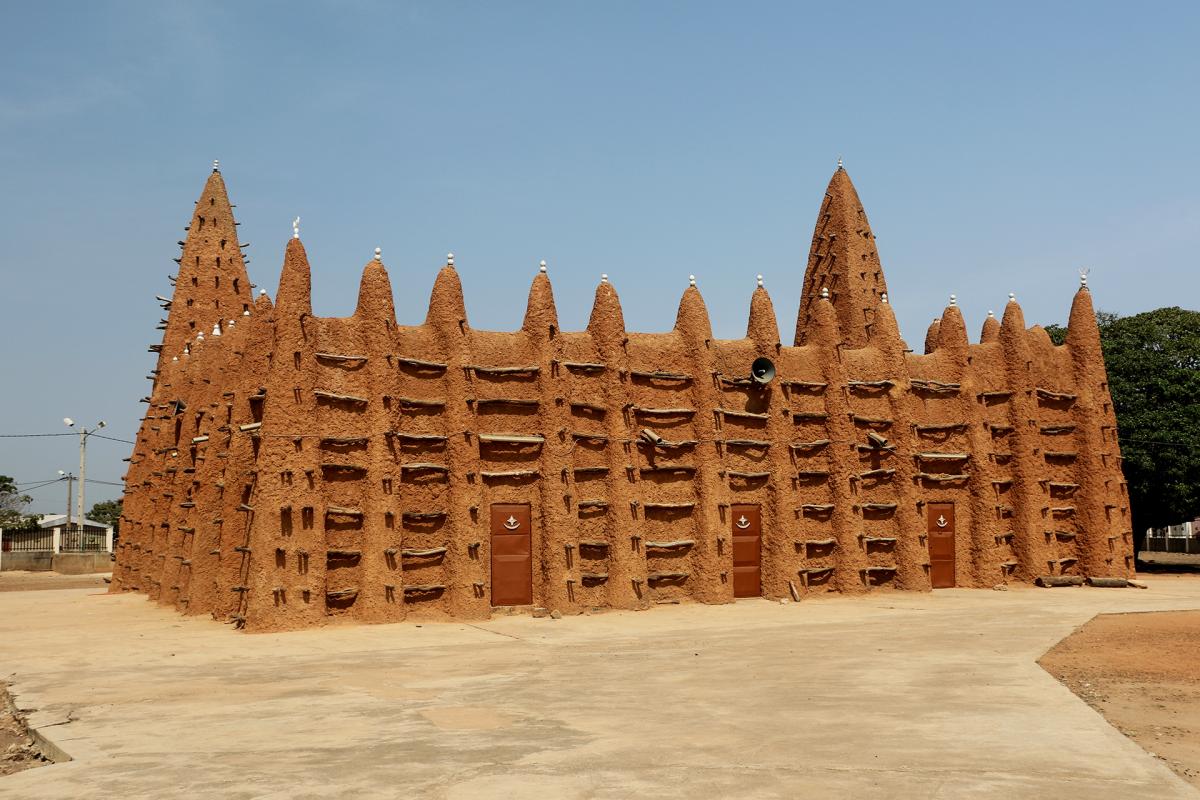
The Sudanese style provides for the use of wooden poles as unique supports of the structure, while as a construction material is used the mud with small pebbles inside that is modeled raw; these architectures need continuous maintenance, especially at the end of the rainy season.
The first mosque we visit is the one known as the Kong Mosque, or Great Mosque; its construction dates back to the eighteenth century, although it was completely destroyed by Samory Tourè, and was later rebuilt.
It is marvelous, the walls of mud and pebbles are orange, in different points of the walls emerge the supporting woods, both parallel and perpendicular to the walls of the mosque itself; on the top of what appear to be columns, there are replicas of ostrich eggs, made of stone or concrete.
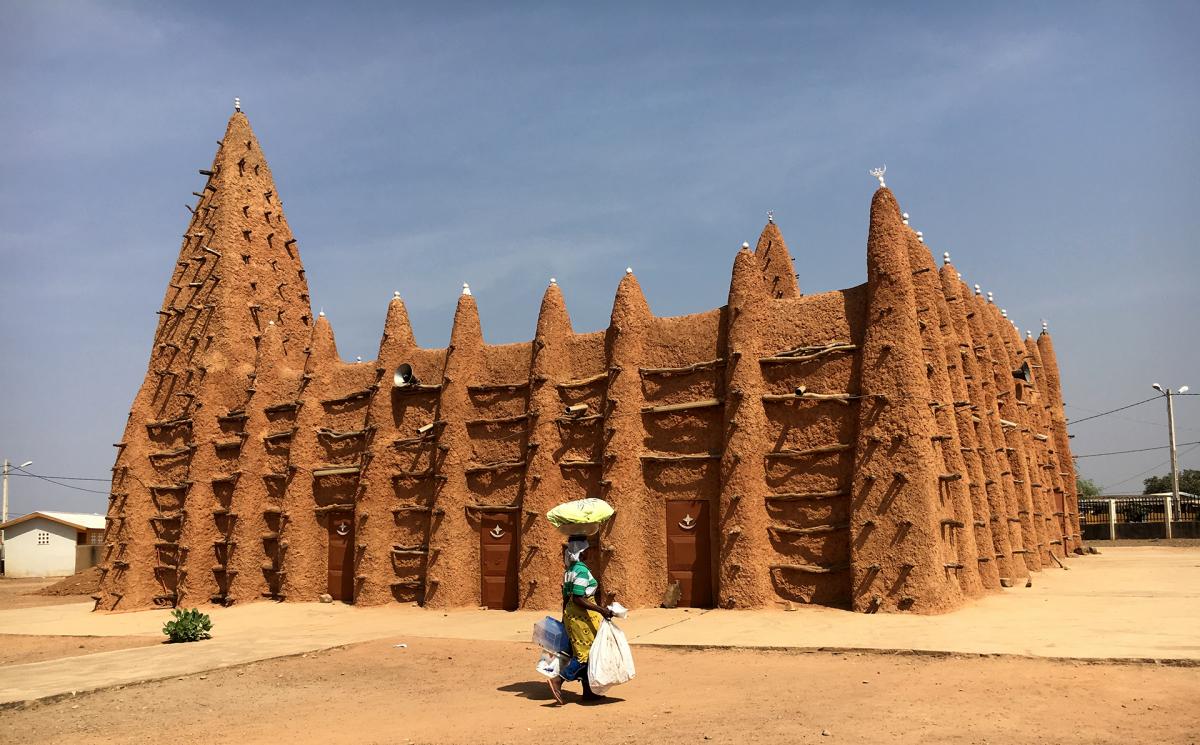
It is possible to enter, removing the shoes of course, so we do not make them repeat twice and enter; inside a local guide tells us some information about the history of the mosque and some details about its construction, it's very interesting.
From inside you can see very well all the woods that support the whole structure; among these woods we see a movement and we realize that there is a colony of bats, they are very small, many are sleeping upside down, but some are awake and seem to want to stretch their wings.
It is also possible to get on the roof of the mosque but I do not even think about it, I suffer from vertigo and it does not seem like an activity for me, but Silvan goes up, imagine if he misses this chance!
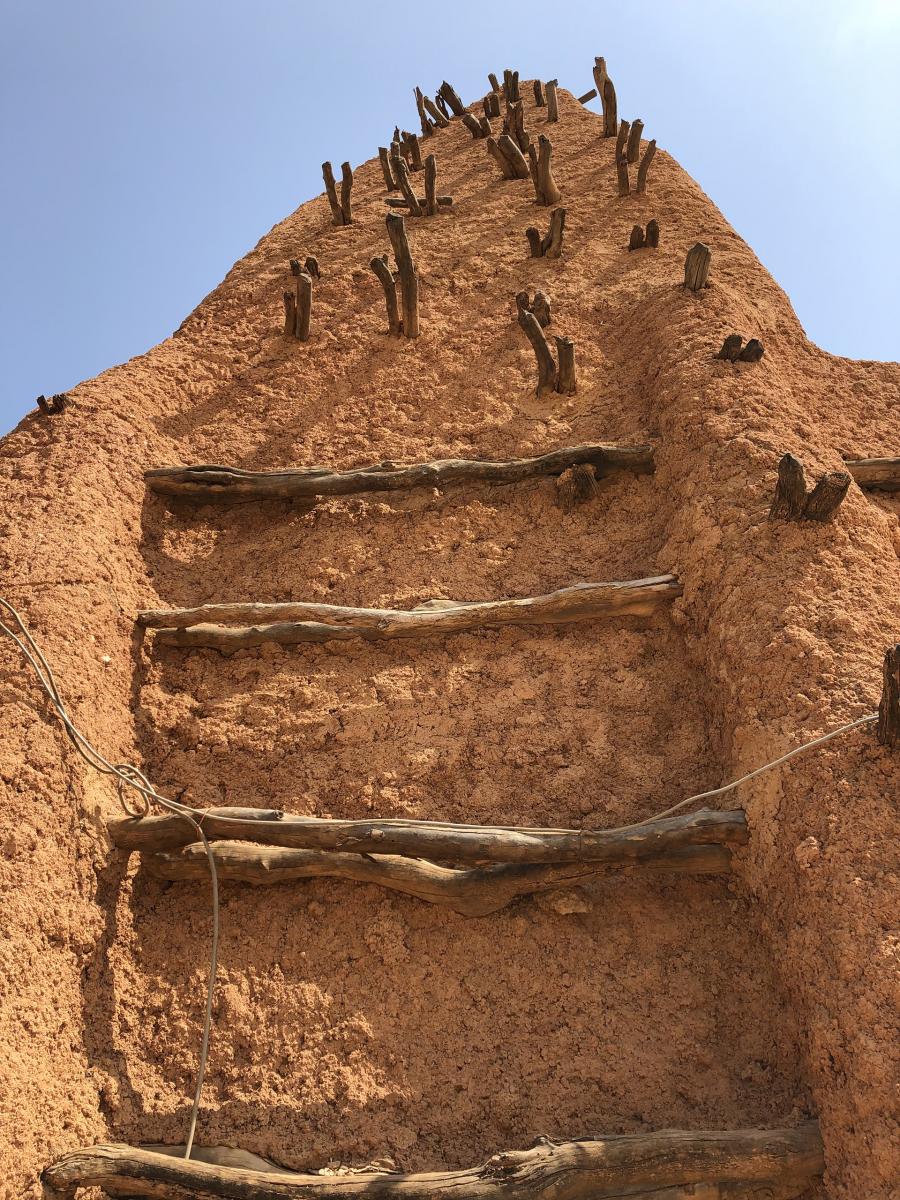
After the visit of this mosque, we take a short walk, it will be at most 400 meters, and we arrive at another mosque, always in Sudanese style.
But this is much older, it seems to date back to the fourteenth century, the structure is smaller and the mud with which it was built is darker.
A legend says that it was built by a merchant from Saudi Arabia, who came to these lands to trade; but in reality it is not known whether this corresponds to reality or not, what is certain is that the mosque was part of the caravanserai used by Algerian merchants who passed through Kongon their journey to the Atlantic coast.
Behind the mosque is a small cemetery that is only for imams, here is also the tomb of the first imam of this mosque.
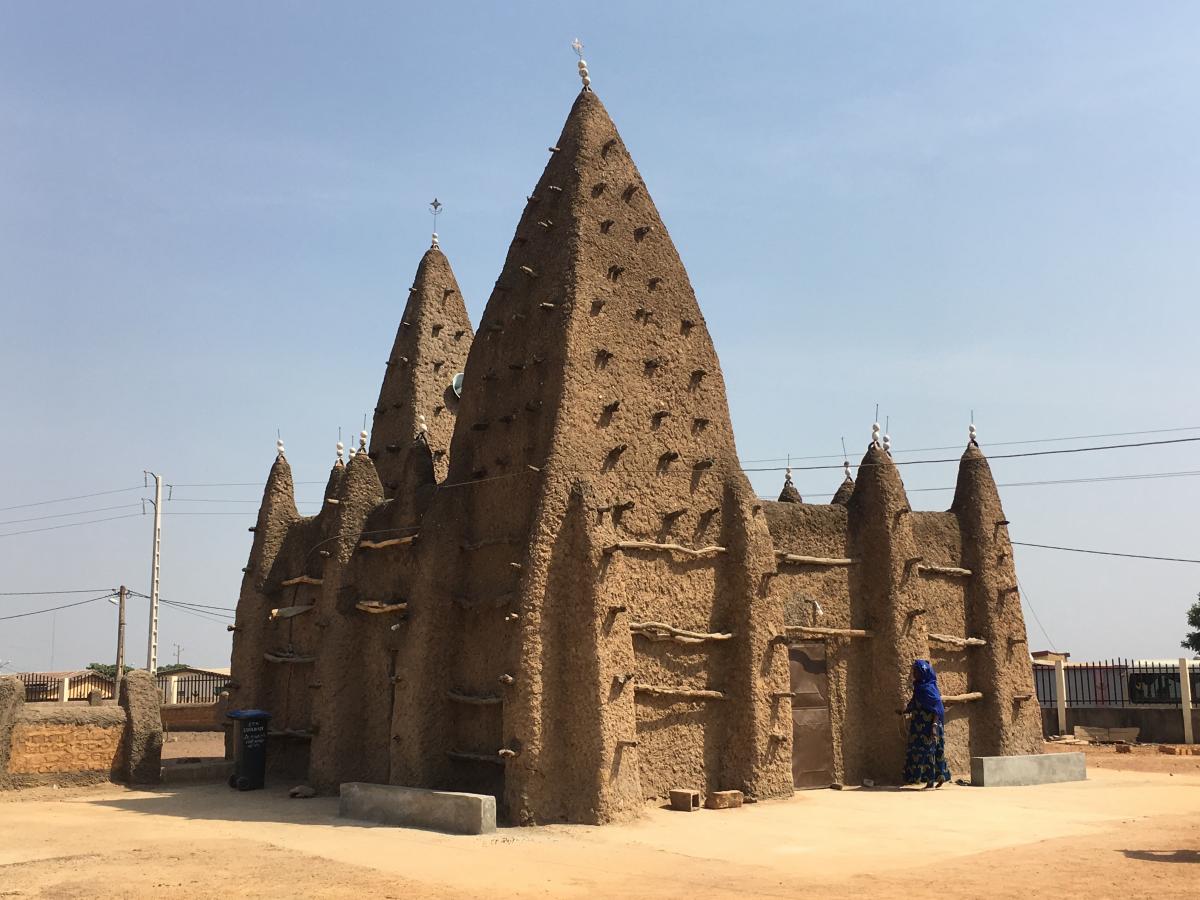
Here, too, you can enter, inside there are two rooms, one for the prayer of men and one for women; right now it's time for the prayer and so there are several people inside.
In the courtyard in front there are several raw bricks that are drying in the sun, not far away there are also wooden molds with which to give the bricks the right shape; they probably use them to restore the mosque after the rains.
We take several photos and then it's time to leave.
We loved Kong and its mosques are wonderful, but getting back in the car gives us some relief from the scorching sun of the Sahel.
We leave again and we head towards Ferke, but along the way we will stop to visit the Senoufo villages.
